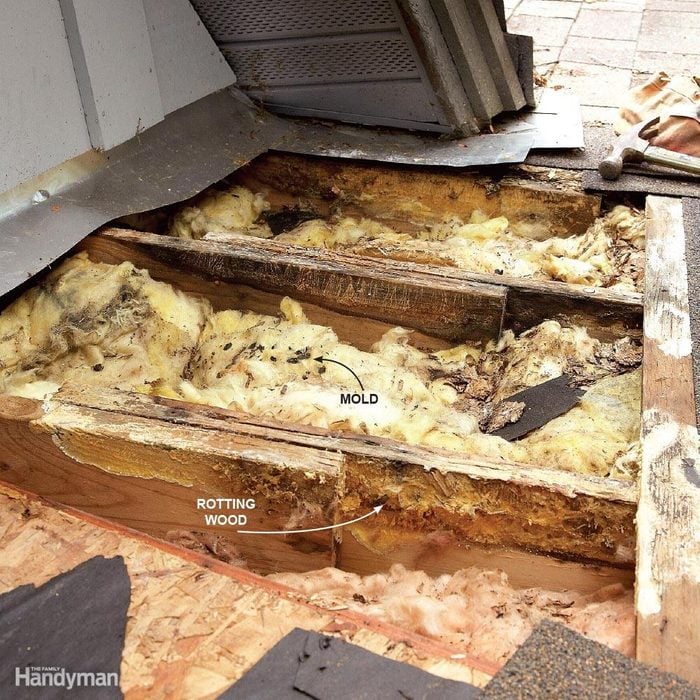
Leaky Roof Overview
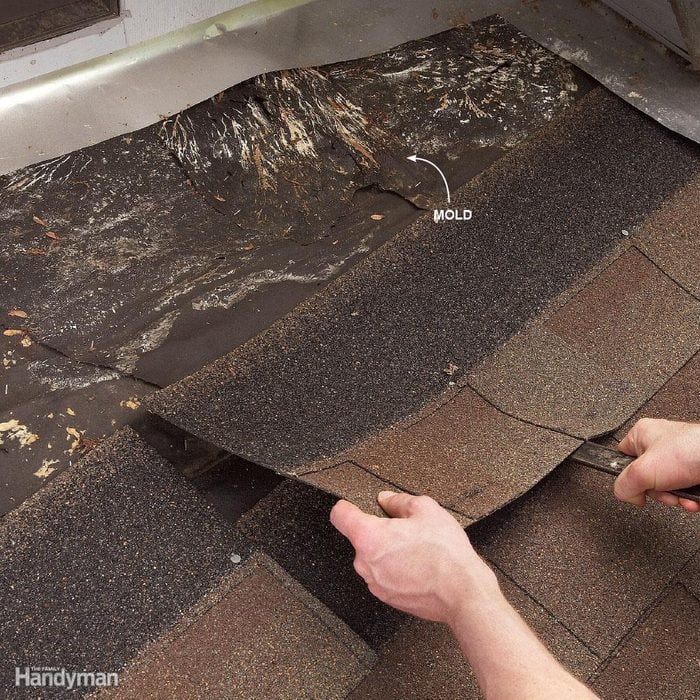
How to Find Roof Leaks
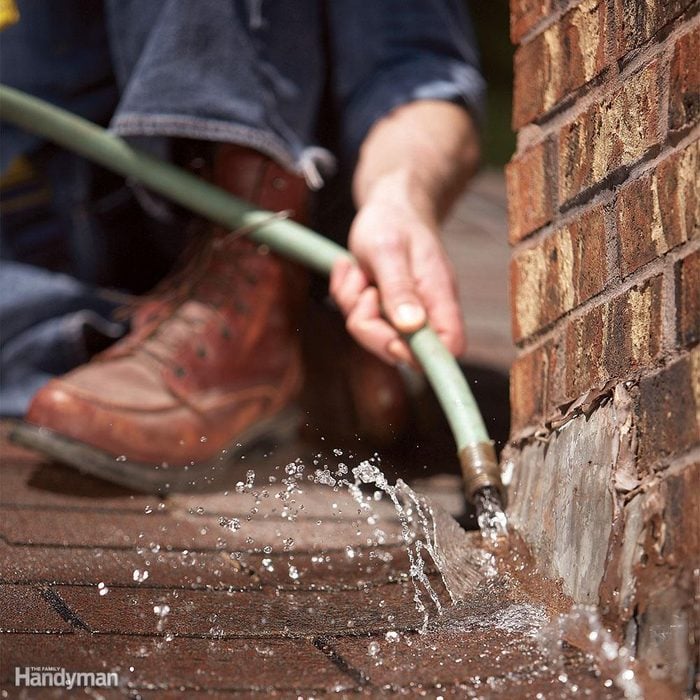
A Trick for Finding Difficult Leaks
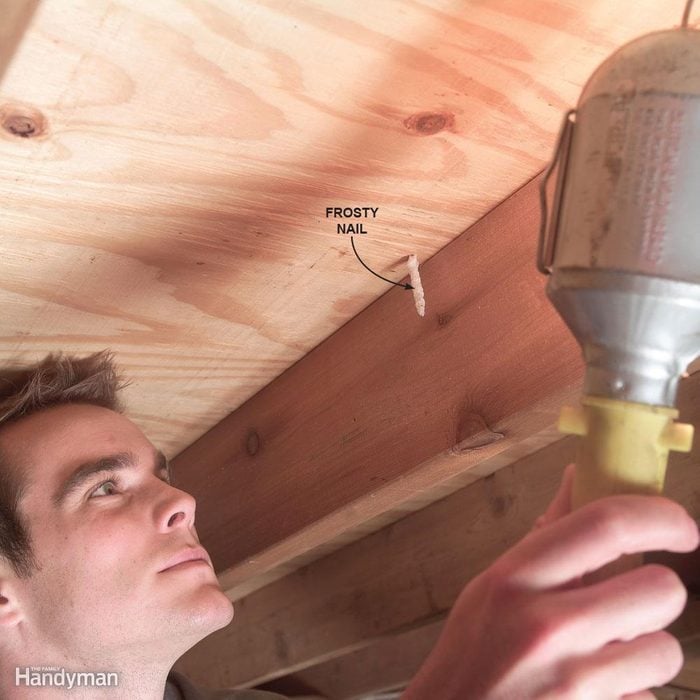
Solution for a Small Leak
Some roof leaks are tough to locate. Sometimes the water shows up at a ceiling spot distant from the leak. If your ceiling has a plastic vapor barrier between the drywall and the attic insulation, push the insulation aside and look for flow stains on the plastic. Often water runs to openings in the vapor barrier, such as at ceiling light fixtures.
If you can't see any telltale flow marks, and since the stain is fairly small, look at the underside of the roof for 'shiners.' A shiner is a nail that missed the framing member, in this case when the carpenter nailed the roof sheathing to the rafters. Moisture that escapes into the cold attic from the rooms below often condenses on cold nails. Sometimes you can spot this if you climb up into your attic on a cold night. The nails will look white because they're frosted. When the attic heats up a bit during the day, the frost melts and drips, then the nails frost up at night again and so on. The solution is to simply clip the nail with a side-cutting pliers.

Fix Plumbing Vent Boots
Plumbing vent boots can be all plastic, plastic and metal, or even two-piece metal units. Check plastic bases for cracks and metal bases for broken seams. Then examine the rubber boot surrounding the pipe. That can be rotted away or torn, allowing water to work its way into the house along the pipe. With any of these problems, you should buy a new vent boot to replace the old one. But if the nails at the base are missing or pulled free and the boot is in good shape, replace them with the rubber-washered screws used for metal roofing systems. You'll find them at any home center with the rest of the screws. You'll have to work neighboring shingles free on both sides. If you don't have extra shingles, be careful when you remove shingles so they can be reused. Use a flat bar to separate the sealant between the layers. Then you'll be able to drive the flat bar under the nail heads to pop out the nails.
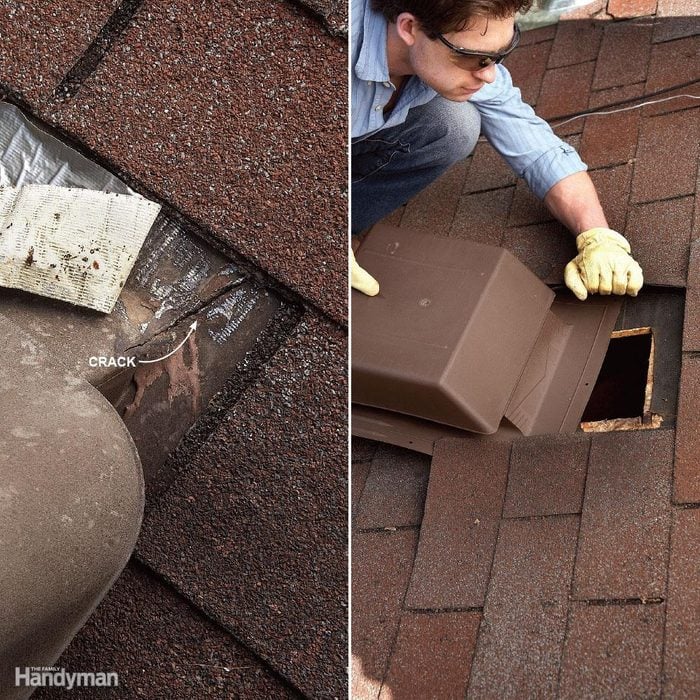
How to Fix Roof Vents

Fix Walls and Dormers

Complex Roof Problem
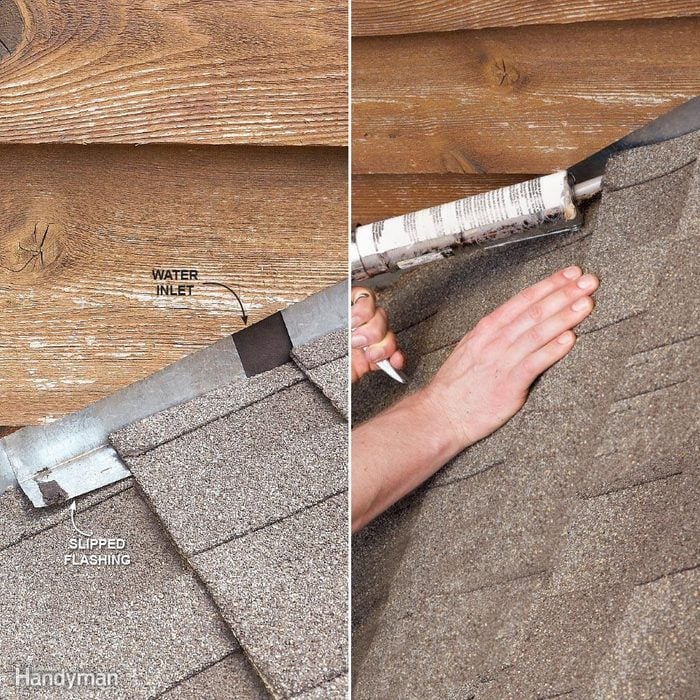
Fix Step Flashing
Step flashing is used along walls that intersect the roof. Each short section of flashing channels water over the shingle downhill from it. But if the flashing rusts through, or a piece comes loose, water will run right behind it, and into the house it goes. Rusted flashing needs to be replaced. That means removing shingles, prying siding loose, and then removing and replacing the step flashing. It's that simple. But occasionally a roofer forgets to nail one in place and it eventually slips down to expose the wall. Check out this article for more on installing your own step flashing.

Don't Count on Caulk!
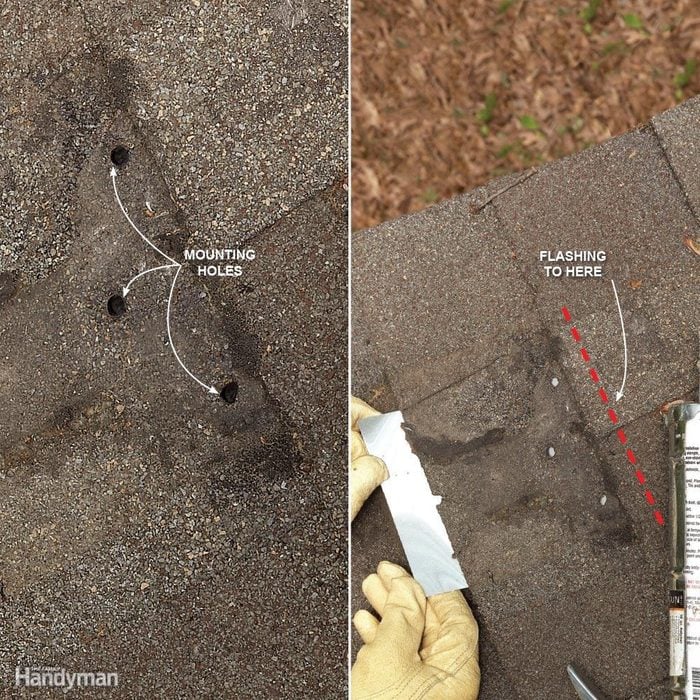
Fix Small Holes

Leaks Around Brick Chimneys
All kinds of bad things can happen around brick chimneys. In fact, there are far too many to cover in this story. Flashing around chimneys can rust through if it's galvanized steel, especially at the 90-degree bend at the bottom. A quick but fairly long-term fix is to simply slip new flashing under the old rusted stuff. That way any water that seeps through will be diverted. The best fix, though, is to cut a saw kerf into the mortar and install new flashing. Get complete instructions on how to install chimney flashing.
If you’re in search of a good ladder to get you up on the roof, check out this video from Stuff We Love on the Little Giant 22-foot ladder, which is available on Amazon.